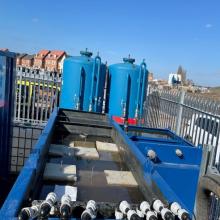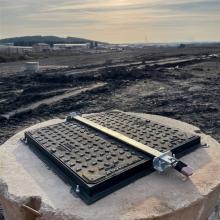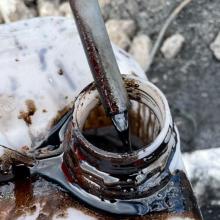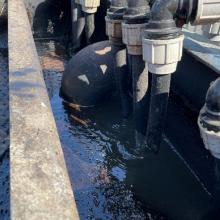Image set

Related services
Opening article section
Article section
Lead
Rich text
Approach
Before work commenced, Englobe undertook an extensive review of the existing data available about the site to develop a course of action to address these groundwater issues. The first stage entailed a detailed review and development of a design investigation and quantitative risk assessment to address data gaps within the existing conceptual model.
Challenge
The design highlighted that there were fundamental flaws in the existing model, which meant the remedial strategy would be fully reassessed and revised prior to discussion with the Environment Agency (EA).
Englobe agreed a new remedial strategy with the EA with limited source removal and wider natural attenuation based on a robust conceptual understanding of the site. The remediation, comprising of non-aqueous phase liquid (NAPL) recovery and conceptual model validation was designed, delivery and operated by Englobe over a 12-week period. This included recovery of NAPL from eight 35m plus deep wells.
Content
Carousel
Image set

Image set

Image set

Image set

Article section
Rich text
Risk was managed by:
- Clear and measurable outcomes agreed with the Regulator and achieved through the remediation design and implementation.
- Englobe’s design experience meant that the previously considered extensive remedial requirement was effectively designed out at an early stage, minimising cost and programme risks. The final design was pragmatic, with clearly defined end points based on betterment, meaning that the remediation treatment time was limited and that the agreed closeout criteria were achievable.
- Englobe’s remediation assessment and design capability, together with knowledge of environmental legislation and regulatory requirements, and the ability to deliver the plant from a in-house inventory, provided the client with a complete and cost-effective package.
Rich text
Impact
Review and design capability gave a substantial time, cost and risk saving to the Harworth Group over previous remediation scopes. This coupled with the relationship and negotiation capabilities with the Regulator allowed pragmatic and achievable endpoints for the remediation to be agreed rather that open ended targets.
Englobe assessed, designed and implemented the remediation from beginning to end meaning that the Harworth Group only needed to contract with one company, saving time and cost.
Both phases of the project were delivered on budget and programme, and completed under Englobe’s Environmental Permit while meeting all the requirement of the design parameters agreed with the EA.